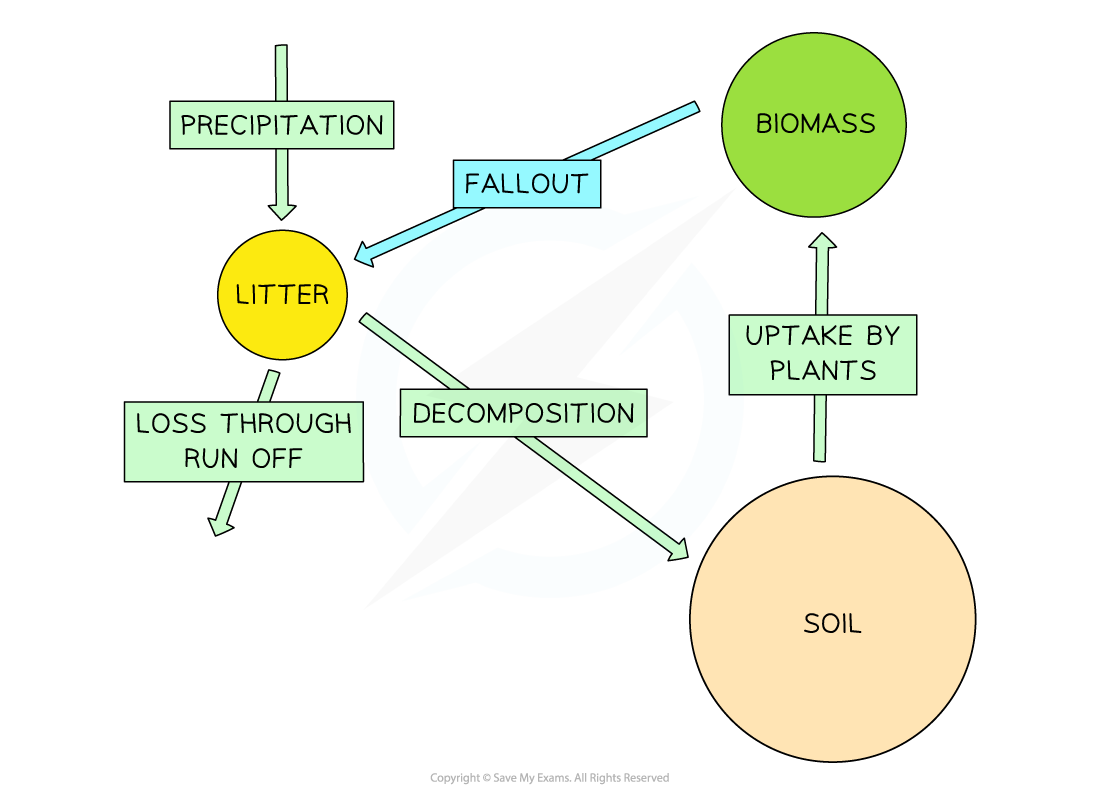Tropical Rainforest Ecosystem Characteristics
- The Tropical rainforest (TRF) biome is mainly found in a band between 15o north and 15o south of the equator within the equatorial climate zone
- Covering only 6% of the Earth's surface the main areas of tropical rainforest ecosystem are in the following countries;
- Amazon which is the largest remaining rainforest on Earth usually associated with Brazil but covers parts of seven other countries
- Central America including parts of Belize, Costa Rica, El Salvador, Guatemala, Honduras, Nicaragua, and Panama
- Central Africa including Cameroon, the Central African Republic, the Republic of Congo, the Democratic Republic of Congo (DRC), Equatorial Guinea and Gabon
- Indo-Malaysia, including Malaysia, Indonesia and a number of other countries in South-East Asia
Biodiversity
- TRFs contain the highest biodiversity of plants and animals on Earth
- Estimates range from over 50% to 80% of the world's plant and animal species
- One 10km2 area can contain up to 1,500 flowering plants, 750 species of trees, 400 species of birds and 150 species of butterflies
Nutrient cycle
- The TRFs have a continual growing season with high rainfall and temperatures all year round
- The nutrient cycle is rapid
- Trees and plants lose their leaves all year round
- The high level of moisture and high temperatures leads to rapid decomposition and recycling of nutrients
- Plants grow quickly which leads to a rapid uptake of nutrients from the soil

Tropical rainforest nutrient cycle
- The result of this rapid nutrient cycle is that the soil in the TRF is not very fertile
Structure of the tropical rainforest
- The TRF has five distinct layers
- Ground layer (0m)
- Shrub layer (3-4m)
- Under canopy (15m)
- Canopy (30m)
- Emergents (45-55m)

Tropical rainforest structure
Adaptations
- The plants and animals within the TRF are very well adapted to the climate conditions
| Plants | Animals |
| Waxy leaves with drip tips - these ensure that rainwater runs off the leaf and does not remain which would encourage mould growth or break the leaf | Sloth - algae grow in the fur of the sloth helping to camouflage it |
| Buttress roots - these large roots above the ground which help to support the very tall trees because the roots below the surface are shallow | Toucan - has a large bill to reach and cut fruit from the branches of trees |
| Lianas - vines which use the tall trees as support to reach the sunlight | Primates - have prehensile tails to help them climb trees |
| Epiphytes - these are plants which grow on trunks and branches of trees getting nutrients from air, rain or debris accumulating around the plant | Geckos - have large, flattened toe pads with sticky scales which allow them to grip the smooth tree trunks |
| Straight, smooth trunks - to reduce the number of epiphytes using the tree | Stick Insects - their stick and leave shapes help them to be camouflaged |
Exam Tip
You may be asked to describe the rainforest vegetation characteristics. As well as adaption features remember to include information about the different layers and heights of each layer.
Food web
- As in all ecosystems the TRF has a complex food web which includes
- Producers
- Primary consumers
- Secondary consumers
- Tertiary consumers

Tropical rainforest food web
Worked example
Study Fig 1, which is a diagram showing information about a tropical rainforest ecosystem in an area of equatorial climate

Suggest reasons why some animals live in the canopy but others live in the ground cover in a tropical rainforest.
[3]
- You need to consider the adaptations and diets of the animals which may lead them to live in a specific layer
- Answer:
- Some are able to climb/fly whereas others are not [1]
- Some need shelter/protection [1]
- Food supplies available (in canopy/at ground level) [1]
- Different habitats/nesting areas etc [1]



